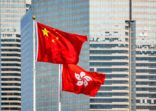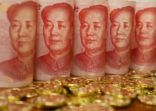Funds are the preferred investment choice among eligible investors of southbound services in the cross-boundary wealth management connect (WMC), while northbound investors from Hong Kong generally choose equity wealth management products, according to a survey.
The scheme allows eligible mainland, Hong Kong and Macau residents in the Greater Bay Area (GBA) to invest in wealth management products distributed by banks in each other’s market, through a closed-loop funds flow channel established between their respective banking systems.
The GBA comprises the two SARs of Hong Kong and Macau, and nine cities in Guangdong province.
HSBC conducted the online survey in October 2021 with 2,300 people living in the GBA, with at least HK$1m ($157,087) in liquid assets.
A majority of southbound (91%) and northbound (76%) respondents said they are interested to participate in the scheme; “products meet my needs” and “to enrich my investment portfolio” were two of the main reasons identified by both group of respondents.
For southbound respondents, 83% showed interest in funds, as compared with other eligible products such as Hong Kong dollar deposits (70%), bonds (57%) and foreign currency deposit (25%).
For northbound respondents, equity wealth management products ranked the top (74%), followed by public fixed income wealth management products (58%) and public securities investment funds (27%).
“Funds and equity wealth management products are the preferred choices as they provide investors a gateway to capture the opportunities from certain sectors or geographical markets, which may not be available to them previously outside the scheme,” Daniel Chan, head of Greater Bay Area of HSBC, said in a statement.
“The survey also reveals that investors are particularly interested in funds with exposure to technology, energy and biotechnology, which shown rapid development in the past few years,” he added.
Different priorities
Interestingly, while the scheme provides a new channel for investors to diversify and globalise their investment portfolio, the majority (62%) of the southbound respondents expressed interest in funds with China exposure, significantly higher than Asia and global (both at 40%).
“This might be because investors prefer to start their overseas investment with something they are more familiar with. Also, as a number of well-known Chinese firms are only listed overseas, mainland Chinese investors may not be able to participate in their growth journey previously and may want to seize the opportunities by picking funds with China theme in the Scheme,” Chan explained.
The survey also highlighted that brand image (80%) is the most common criteria for southbound investors when choosing the bank for the service, followed by product variety (66%) and a user-friendly digital channel (59%). For northbound investors, the top focuses are service charge (67%), brand image (60%) and return of product (54%).
When asked about expected annualised return from the investment, over half (55%) of southbound investors and 44% of northbound investors are looking for a 7-9% yield, whereas a considerable portion of respondents (28% of southbound and 40% of northbound) targeting at least a double-digit rate of return.
Separately, the survey shows differences in preference for how to manage investment under this Scheme. Northbound investors are mostly happy with mobile or online platform (62%), while 52% of southbound investors opt for the human touch, such as via relationship manager, and a local or Hong Kong/Macau branch.

















